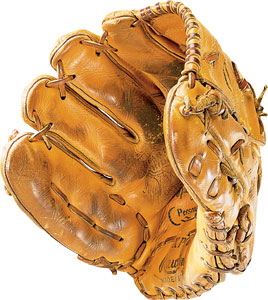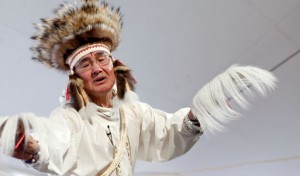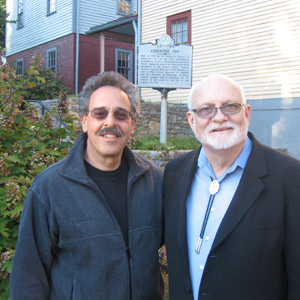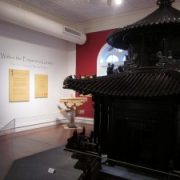Smithsonian artifacts help tell the story at new National Museum of American Jewish History
The new National Museum of American Jewish History hosts its grand opening celebration this weekend. And you’ve probably already heard the buzz that VIPs such as Bette Midler, Jerry Seinfeld and Vice President Joe Biden will be on hand for the opening. But did you know there will be some quieter stars sticking around long after opening weekend concludes? Thanks to loans from the Smithsonian’s National Museum of American History and National Museum of the American Indian, 13 amazing artifacts from the Smithsonian collection that document the history and achievements of Jewish Americans will be on view for visitors long after the fanfare ends. Here’s a few of the Smithsonian artifacts visitors will encounter:
 Albert Einstein’s pipe
Albert Einstein’s pipe
One of only 18 Jewish Americans to be featured in the Museum’s prestigious “Only in America” gallery, Albert Einstein, creator of the theory of relativity, Nobel Prize winner, and striver for world peace, is almost as well known for his physical appearance as for his epochal work in theoretical physics. Characteristic of that appearance was a pipe. Although in his later years he restricted his smoking on doctors’ orders, he couldn’t bear to give up the tactile experience of a pipe itself. This one, in fact, gives evidence of Einstein’s long usage in a hole he wore through its bit.
 Polio vaccine vial
Polio vaccine vial
Jonas Salk first tested his polio vaccine on humans in July 1952 when he inoculated thirty children at the D. T. Watson Home for Crippled Children near Pittsburgh, Pennsylvania. This vial contains residue of polio vaccine from these first tests, which had a profound effect on American medical history.
 Sandy Koufax’s Rawlings Mickey Mantle Professional Model mitt
Sandy Koufax’s Rawlings Mickey Mantle Professional Model mitt
Sandy Koufax was signed to his hometown Brooklyn Dodgers in 1955 and started pitching regularly for them when they moved to Los Angeles. In 1961, with a wicked curve ball, Koufax won 18 games and triggered one of the most exciting five-season performances ever seen on a mound. This included the lowest earned-run average in baseball for five straight years, a no-hitter in each of four consecutive seasons, and three World Series championships. Koufax used this left-hander’s glove during his career with the Dodgers.
 Shofar (Central Europe, 19th century)
Shofar (Central Europe, 19th century)
This shofar, a Jewish ceremonial instrument made from a ram’s horn, was the first object of Judaica collected by former curator Cyrus Adler for the (Smithsonian) National Museum in 1889. Want to hear what one sounds like? Click here to listen at Smithsonian Folkways!
Irving Berlin’s Uniform Jacket from WWI
Irving Berlin’s jacket will be exhibited in a gallery devoted to telling the American Jewish experience during WWI. While a doughboy in WWI, Berlin wrote songs and presented musicals which raised money for Camp Upton.
Did you know that the character of Superman was created by Jewish Americans? Smithsonian artifacts such as a Superman doll, a gold rush coin, sheet music and more, add an important complement to the Museum’s exhibitions, which chronicle 350 years of American Jewish history. The Smithsonian could not be prouder to be part of this historic opening event.
The National Museum of American Jewish History officially opens to the public on November 26. For more information about this museum, visit
Interested in more headlines about the museum’s opening? See our blog post, Affiliates in the News, for more info.
All images courtesy National Museum of American History.












